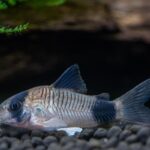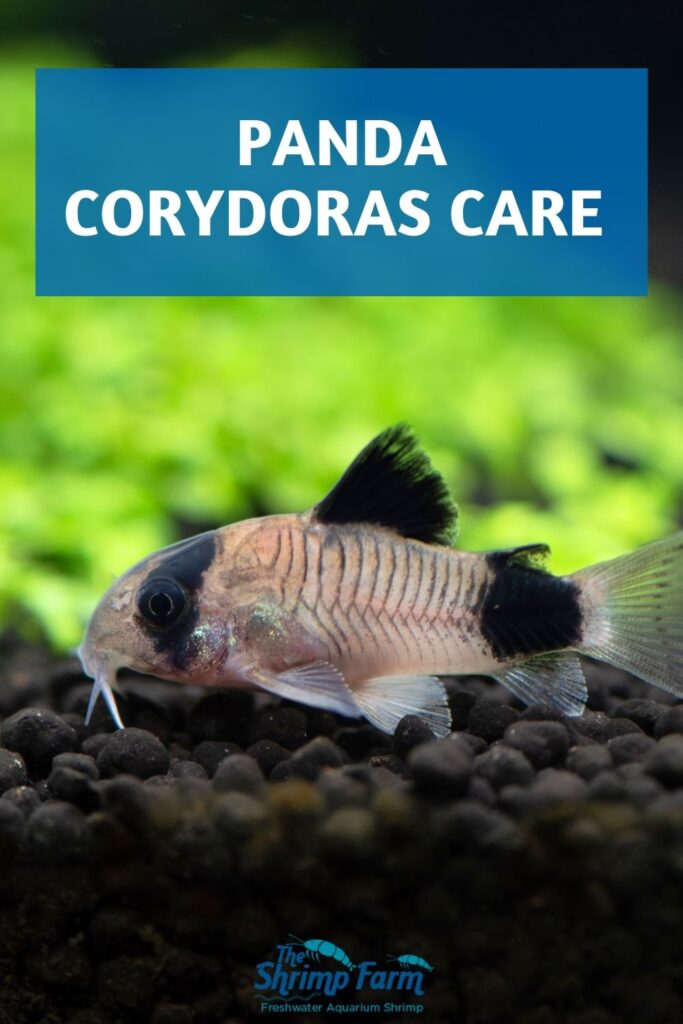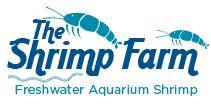Panda Corydoras 101 | Care & Info
Looking to add some life to your shrimp tank, or a cheerful bottom dweller for your community aquarium? You'll love the panda Corydoras, a popular catfish species appreciated by freshwater aquarists for its peaceful disposition and vivacious personality.
In this care guide, let's have a look at everything you need to know about panda Cories, including where they're naturally found, how to care for them in the aquarium and how to breed them.
| Scientific name | Corydoras panda |
| Common names | Panda Corydoras, panda Cory, panda catfish |
| Difficulty level | Easy |
| Origin | Peru, Ecuador |
Table of Contents
Panda Corydoras appearance & natural habitat
Appearance
It's not difficult to see where the panda Corydoras got its name! The species sports a beige to orange-ish base color and striking black "eyeshadow". The dorsal fin is also black, as is the caudal peduncle (the area right before the caudal or tail fin).
A typical bottom dweller, this Corydoras has a downturned mouth and three pairs of sensory organs called barbels, which allow it to feel the substrate for edible morsels. Like all Corydoras, it has sharp spines on its dorsal and pectoral fins. Be careful when trying to catch yours, as the spines can get tangled in a net!
With some practice, you'll learn to be able to tell the difference between male and female panda Corydoras. The females grow larger than the males (a little over 2" in length) and are more rounded when viewed from above.
Did you know? Unlike most other fish, Corydoras catfish don't have scales. Instead, they have scutes, which are larger, bony plates that likely offer them some protection from predators. That's why this genus is also referred to as the "armored catfish"!
Natural habitat
This species was first described in 1971 in a journal called Beaufortia, along with another Corydoras species that was named C. maculifer. You can actually read the initial species description (link downloads a PDF) if you're interested in that sort of thing!
As the description discusses, the first specimens were collected in Peru. The species has since been determined to naturally occur both in the Amazon river basin in this South American country as well as in neighboring Ecuador.
In its natural habitat, the panda Corydoras is found in clear, fast-flowing waters. The substrate in these rivers and streams is usually sandy, and they feature a variety of aquatic vegetation and plant roots. They can be cooler than the surrounding waters thanks to meltwater from the Andes mountain range.
Unfortunately, panda Cories are listed as Near Threatened in their natural habitat by the IUCN. The organization lists collection for the pet trade as a direct cause. Luckily, it's exceedingly rare to find wild-caught specimens for sale nowadays, as this species does reproduce easily in captivity.
Did you know? Corydoras catfish, including the panda Cory, can breathe air. You'll likely see yours dart up to the surface regularly to get a gulp of air, which is subsequently swallowed and the oxygen extracted in the intestines. This doesn't mean they can survive out of the water, though! It's more of a "bonus".
Setting up a panda Corydoras aquarium
Requirements
Aside from their cheerful and peaceful nature, one of the main reasons panda Cories are so popular in the aquarium hobby is that they're easy to keep. They don't need a large aquarium: 20 gallons or up should be fine to sustain a sizeable group.
As your Corydoras will spend much of their life scuttling across the tank bottom, it's important to choose a suitable substrate. Avoid sharp gravel, which can damage their sensitive barbels. Instead, it's best to go for something sandy, or at least a finer and more rounded type of gravel.
In terms of décor, be sure to include some live plants, rocks, driftwood, and/or caves. This gives your panda Corydoras places to hide if they feel the need. You'll see them out in the open more often if they know they can dart to safety if need be.
Water parameters
One important thing to keep in mind about panda Corydoras is that they like their water a little cooler than most of their other Cory cousins. We mentioned that the rivers and streams they naturally inhabit can be a bit chilly. As a result, they're not adapted to tropical aquarium temperatures over 77 °F.
The good news for us shrimp enthusiasts is that this makes this catfish species a particularly good tankmate choice for our favorite invertebrates. After all, shrimp don't like things too toasty either. You can keep the temperature between 65-68 °F, although a little cooler is not a problem either.
In terms of acidity, remember that most Amazon basin fish don't like a very high pH. They can do well up to a pH of 8, but something between 6-7.5 is probably preferable. This being said, you'll learn that in the aquarium hobby, stability is more important than hitting the exact numbers!
As always, your aquarium should be fully cycled before you introduce any livestock. You should perform weekly small water changes and monitor the water quality using a liquid water test kit. These fish can be sensitive to less-than-optimal water quality, so be sure to stay on top of aquarium maintenance.
pH: 6-7.5
Temperature: 65-68 °F
Hardness:
Tankmates
The nice thing about Corydoras catfish is that they're very good neighbors. Picking tankmates for your panda Cories is easy, as they play nice with pretty much everyone. Due to them mainly inhabiting the bottom water layer, they don't tend to get in their tankmates' way either.
This species is highly gregarious and doesn't tend to mind their shoal mates being of a different species. Panda Cories will group with anything from other Corydoras species to loaches! This being said, they do appreciate the presence of their own kind, so it's a good idea to get at least 8 (preferably more).
As long as they can't fit a panda Corydoras in their mouth, most other fish that appreciate similar water values will also be suitable. Opt for small schooling fish like rasbora, fellow bottom dwellers such as kuhli loaches, or species that inhabit the upper water layer, including hatchetfish or gourami.
There are also various types of invertebrates you can keep with panda Cories. Although they might consume a baby shrimp if given the chance, something like a colony of Neocaridina shrimp or the larger Amano shrimp should do absolutely fine alongside them.
You can also opt for snails. There are loads of different freshwater snail species to choose from!
Panda Corydoras diet
Wild panda Corydoras spend much of their day scanning the bottom for edible bits, and this won't be much different in the aquarium. They'll eat pretty much anything they come across, although they do lean more towards meaty foods than plant-based ones, so feed yours accordingly.
You can offer your panda Cories a mix of high-quality sinking fish foods, (thawed) frozen foods like bloodworms and mosquito larvae, and even live foods like brine shrimp. Algae tabs can be given to make up the vegetarian portion of their diet.
Breeding panda Corydoras
As briefly mentioned earlier, panda Corydoras usually breed readily in captivity. Even if you don't have much experience breeding fish, you should be able to get yours to reproduce with a little effort on your part!
Most aquarists opt to set up a separate breeding tank. This can be a bare-bottom 10-gallon aquarium with plenty of Java moss or spawning mops, plus a few caves for the fish to hide in. Get at least six or so Cories to ensure you've got both males and females in there.
To ensure the fish are in the mood, feed plenty of nutritious live and frozen bugs and worms. Once the females are looking nice and round (meaning they're carrying eggs), start performing sizeable water changes with slightly cooler water every few days to hopefully trigger spawning. You'll know things are moving in the right direction when the Cories start excitedly zipping around the tank!
The eggs will be stuck to the tank windows, the Java moss, or whichever piece of décor the female finds suitable. Some aquarists will remove the parents after the eggs have been deposited.
The eggs will hatch after up to five days. The fry will feed on their yolk sac for the first two days or so, after which you can start feeding microfoods like infusoria and powdered fry foods. Once they grow a bit, they can be switched to newly hatched brine shrimp and other larger foods.
Buying panda Corydoras
Panda Cories are among the most popular freshwater aquarium fish available in the pet trade today, so you shouldn't have much trouble finding them at your local aquarium store. You can also buy them online: The Shrimp Farm sells panda Corydoras and ships them right to your doorstep with live arrival guarantee!



 Shrimp
Shrimp Fish
Fish Crab &
Crab & Plants
Plants Foods
Foods Snails
Snails

